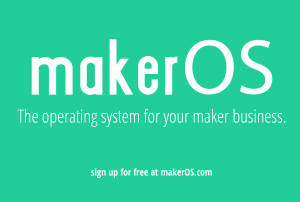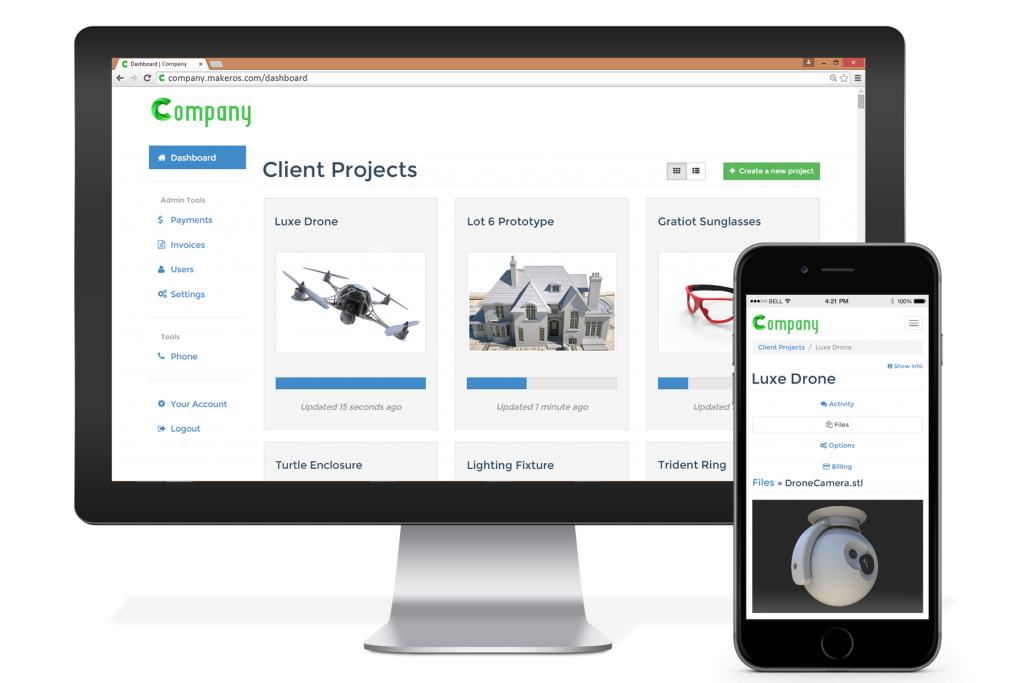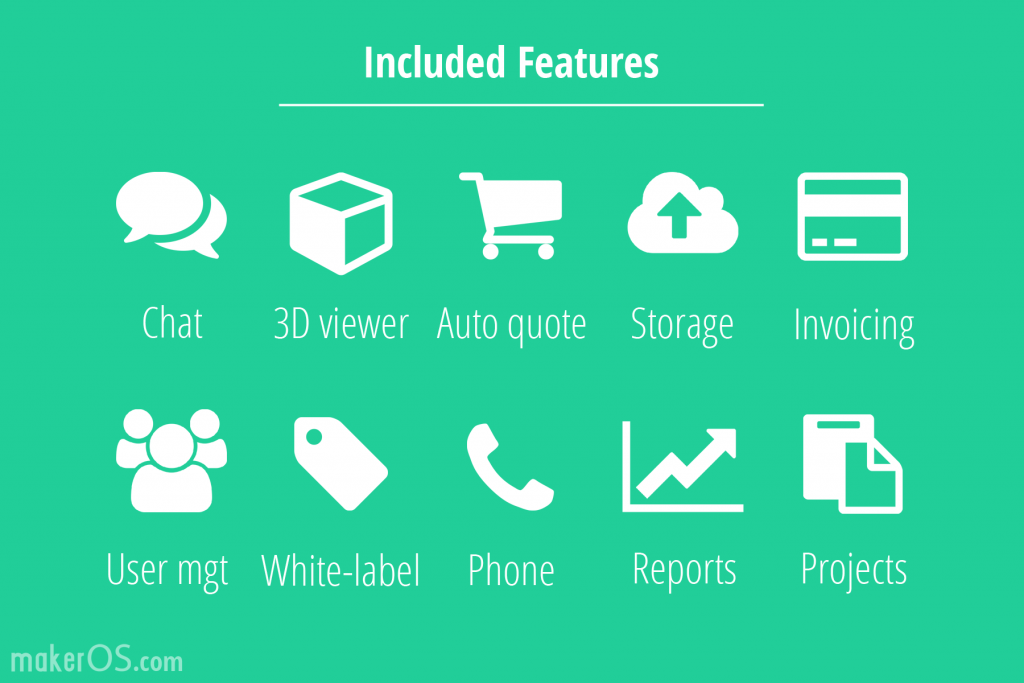You have The Next Big Idea. You know how to build it. Now what?
Running a successful Maker enterprise based around 3D printing also means interacting with clients and above all, getting payment for your work.
Mike Moceri, the founder and CEO of makerOS and Manulith in Detroit, says he wanted to address a lack of business management tools to help Makers, and so he created MakerOS to get a handle on running his own 3D printing, prototyping and design company, Manulith.
 Moceri calls MakerOS “the industry’s first standard business operating system for managing business activities in the cloud.” He says his service is designed for maker businesses – including 3D printing service providers – to save time and money by streamlining the quoting process, consolidating project management, managing customers and taking payments.
Moceri calls MakerOS “the industry’s first standard business operating system for managing business activities in the cloud.” He says his service is designed for maker businesses – including 3D printing service providers – to save time and money by streamlining the quoting process, consolidating project management, managing customers and taking payments.
MakerOS features a customizable auto quotation module, 3D part viewer, project management tools, cloud storage and custom invoicing. Moceri says the service can also be “white-labeled” to install directly onto a website.
It works like this: When a business registers with makerOS, they get a custom subdomain which provides a dashboard for a business owner to create lines of communication between a Maker and clients. The client has access to their own dashboard, and by filling out a short form to describe what they want, they can then upload photos and files from common cloud services. Moceri says it’s this dashboard which provides a simple way to quote products and services, receive payments, and open discussion between a Maker and client through a “bulletin board” which supports push notifications.
“MakerOS is the most accessible business management platform for people and businesses who make things, it sets the standard for the future of manufacturing processes,” Moceri told 3DPrint.com. “With our platform, we made a stellar cloud based business management tool, made it incredibly easy to use, and made it absurdly affordable.”
Moceri studied entrepreneurship and interactive media at DePaul University before he entered the 3D printing industry by building his first printer in 2011. He then went on to intern with MakerBot and becoming a member of the DIY 3D printing community online and in Chicago. He developed a standardized process for 3D scanning to printing, and later co-founded the world’s first 3D printing retail and service bureau hybrid in April 2013 in downtown Chicago, 3DPX.

Looking for his next venture, Moceri moved back to Detroit to start up Manulith and makerOS. Of this latest venture, Moceri says registering an account and installing makerOS on a website is as easy as signing up for a social media account. Service providers can instantly allow customers to sign up for their service and begin taking orders. The cost for the service is “a small percentage of each transaction.”
“By using makerOS on your business’ website, you effectively eliminate the challenges of inefficient business practices that have plagued the manufacturing and service sectors for decades,” Moceri says. “The typical process for a 3D printing service provider to get paid – and actually carry out an order – can take weeks. makerOS can reduce that pipeline down to a
day, or minutes, while significantly lowering operating costs. ”
The cloud based web application meant for any internet-enabled device like a smartphone or tablet includes automatic 3D file quotation for production, 3D file repair and conversion, a universal 3D file viewer, user and customer management features, cloud storage and file management, project management tools, team and customer chat functions, custom invoicing and invoice management, an integrated payment system, a virtual phone system and financial and performance metrics reporting. So why a cloud-based system?
“I wanted to manage my 3D printing business from the beach,” Moceri says.
Moceri says makerOS will be released as a public beta in 2015.
Would makerOS help you run your 3D printing or Maker business? Let us know in the MakerOS Business Management Tool forum thread on 3DPB.com.
Subscribe to Our Email Newsletter
Stay up-to-date on all the latest news from the 3D printing industry and receive information and offers from third party vendors.
You May Also Like
Gorilla Sports GE’s First 3D Printed Titanium Cast
How do you help a gorilla with a broken arm? Sounds like the start of a bad joke a zookeeper might tell, but it’s an actual dilemma recently faced by...
Nylon 3D Printed Parts Made More Functional with Coatings & Colors
Parts 3D printed from polyamide (PA, Nylon) 12 using powder bed fusion (PBF) are a mainstay in the additive manufacturing (AM) industry. While post-finishing processes have improved the porosity of...
$25M to Back Sintavia’s Largest Expansion of Metal 3D Printing Capacity Since 2019
Sintavia, the digital manufacturing company specializing in mission-critical parts for strategic sectors, announced a $25 million investment to increase its production capacity, the largest expansion to its operations since 2019....
Velo3D Initiates Public Offering in a Bid to Strengthen Financial Foundations and Drive Future Growth
Velo3D (NYSE: VLD) has been among a number of publicly traded 3D printing firms that have attempted to weather the current macroeconomic climate. After posting a challenging financial report for 2023,...

































